You always want to make sure that your homeowner’s insurance is capable of providing you with enough protection for your property. Given the nature of the housing market, which is subject to change for a host of different reasons, it’s natural to be worried about your current level of protection in the event something happens to your home and it needs to be repaired or even replaced.
Whether your insurance will cover all of the costs will depend on your policy, of course. One of the biggest factors that will help to determine whether you have the coverage you need is the way your home is insured. Is it insured using market value or replacement cost? Let’s get a closer look at each of these ways of valuing a house and then see how they differ.
The Market Value
The market value of a home is the amount that a buyer would pay to buy the home and land in its current condition. The market value is determined by a range of factors that include things like the value of the land, the age and square footage of the home, the architectural style, the price and availability of comparable homes nearby, and the housing supply and demand.
Some of the elements that go into the market value are a little harder to quantify because of the nature of the buyers themselves. This includes things like the quality of the neighborhood, the proximity of quality schools and amenities, and local crime statistics. If the crime in your neighborhood is going up, you can be sure that the property values are going to drop. No one wants to live in a place where they don’t feel safe.
A lot of people choose to insure their homes based on the market value, but this could be a huge mistake. It means that you could end up with incomplete coverage, as the market value of the home is often less than the actual replacement cost of the property.
Let’s look at an example. Let’s say you were to get an insurance policy based on the market value of the home for $225,000. While this might seem like enough coverage, the replacement cost of the home might be closer to $250,000.
This means that if the home were to be destroyed in a fire, the insurance policy would only provide you with the aforementioned $225,000. You would have to come up with the difference to create a new home that is just like your previous home, or you would have to find ways to cut costs on the build.
On the other hand, there is also the possibility that you are over-insured. If the value of homes in the area has dropped, it could mean that you are paying far more for insurance than you should be. Also keep in mind that the market value can change quickly, too. If you find that you are overpaying, you might want to revisit your policy when it’s possible to make a change, just so you don’t end up paying too much.
As you can imagine, no one wants to be in either of these positions. Instead of using the market value, it might be a better option to insure your home based on the actual replacement cost.
The Replacement Cost
The replacement cost, as the name suggests, is the total cost of repairing or replacing your entire home. Simply put, when you insure your home for the estimated cost of replacing it, the insurer will reimburse you for that full cost based on the size and structure of the home.
Of course, many factors will go into determining the replacement cost of the property including the square footage and the age of the home, as is the case with market value. However, it also includes the total local labor and construction costs, property demolition and debris removal, materials, etc. Something to remember, though, is that the replacement cost doesn’t include the value of the land, where land value is included with the market value. It provides a full and more accurate amount of coverage in the event you need it.
The biggest benefit of using the cost replacement method when insuring your home is that it can help you to get your home repaired or rebuilt without the need to use extra of your own funds. Ideally, you will opt to have your home insured for at least 100% of its estimated cost replacement value.
How Do You Know the Replacement Cost?
One of the best ways to get an idea of the replacement cost is to hire a professional, such as a building contractor, to provide you with a detailed cost replacement estimate. Sometimes, you can get help from the insurance company you are going to be using, but you might also want to have a third-party source provide an estimate.
Are There Any Risks to Using Replacement Cost?
You need to remember that just as the market value of a home can change, so can the replacement cost. Therefore, you will want to check every year to make sure that the policy meets your needs. For example, if you make upgrades and improvements to the home, it will increase the replacement cost. You would therefore want to make sure you have a policy that reflects this higher value.
Other things could potentially increase the cost to replace your home, as well. For example, increased labor or material costs would mean that the cost to replace the home would be higher. You may want to see if there is an insurance policy option that includes an inflation clause, that will adjust for the changes in construction costs.
Because you are going to insure the total replacement cost, there is a chance that the premiums will be higher than what you would pay with the market value. However, the benefits tend to outweigh the risks substantially.
Examine Your Coverage Each Year
It is a good idea to check your coverage annually. This will help to ensure you know the value of your home and the best way to provide the coverage you need. It will also provide you with some peace of mind. Few things are as disheartening as having a catastrophe that causes property damage and realizing you don’t have enough coverage.
Get the Protection Your Home Needs Sooner Rather than Later
Let’s be honest. Most people hate the idea of shopping for any sort of insurance. This goes double for homeowner’s insurance. Many feel that it’s a hassle to try to sort through the options and find a good insurance company. They also don’t like the idea of revisiting their insurance policy annually to ensure they still have enough coverage.
However, you have to think about what could happen if you don’t do this. No one wants to think about serious property damage or the loss of an entire home. However, this is a reality for many people each year. It’s far better to be fully prepared for this and to have the coverage you need. You will sleep easier at night when you have it. Don’t wait so long that you regret not revisiting your insurance policies.
The way that you insure your home—actual replacement cost or market value—is ultimately up to you. Check out the available policies, the costs, the features, etc., and then weigh your decision on what you feel is best for you and your family.
Stash Property Restoration offers stress-free financing options for homeowners throughout Chicagoland and Northwest Indiana. During a consultation, we can discuss with you our financing options designated to fit your specific project.
Get in touch with Stash Property Restoration. We’ve been doing business in the Chicago and Northwest Indiana areas for more than 37 years. Whether you need a massive restoration or minor repairs, we can help. Call us at 219-924-0266 or send us a message to let us know how we can help.


